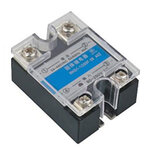Asabzi2000
Junior Member level 1
- Joined
- Mar 13, 2013
- Messages
- 19
- Helped
- 0
- Reputation
- 0
- Reaction score
- 0
- Trophy points
- 1,281
- Location
- Tarkwa, Ghana
- Activity points
- 1,422
I am designing a an automatic transfer switch with a microcontroller as the main control element. The controller would receive analog inputs from AC sensors and based on their states, switch on a generator set or allow the system to run on normal utility supply. The controller will start the gen set engine through solid state relays. Should I use an AC current sensor or AC voltage sensor? How do I configure the sensor so they can be detected by the MCU. What kind of SSRs may be appropriate? Please suggest!





